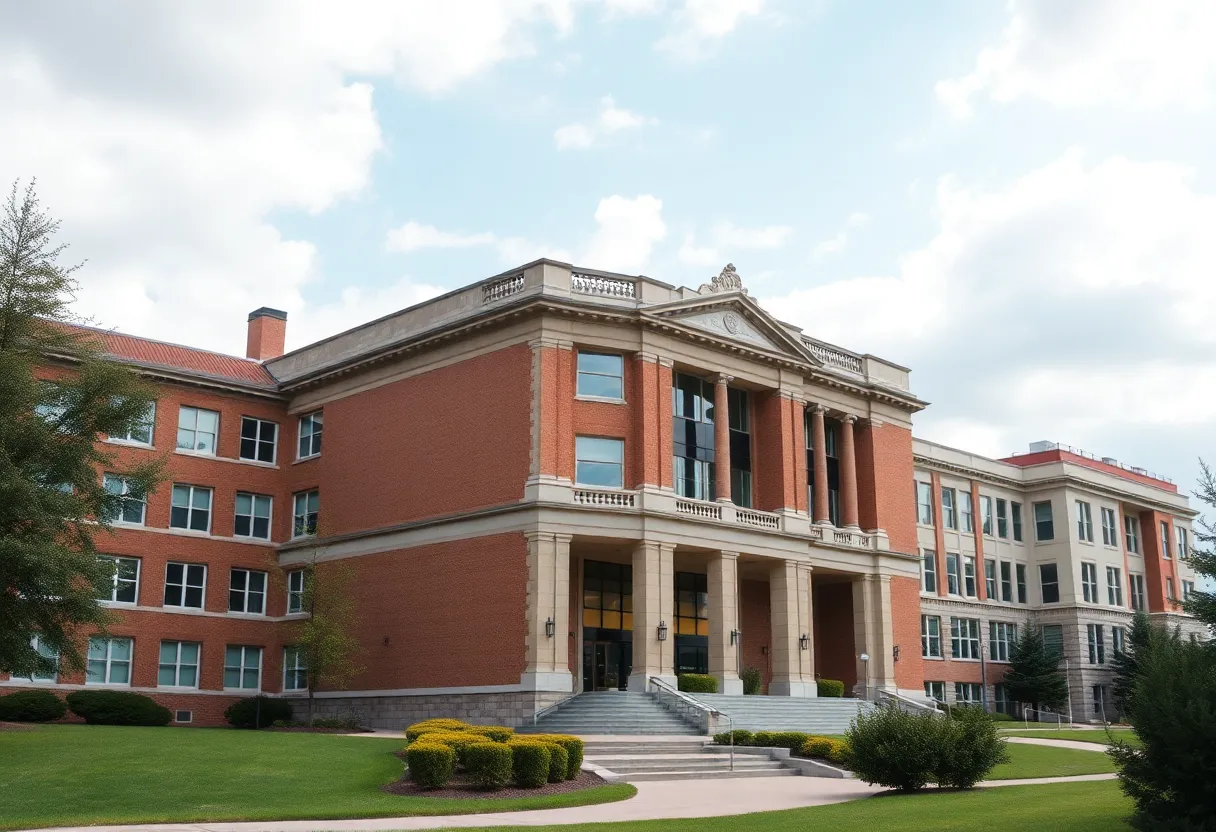Lincoln, NE, October 18, 2025
An analysis of the University of Nebraska system’s 2024 financial records reveals a troubling trend: administrative salaries have risen by 15% over five years, surpassing an 8% increase for faculty members. This shift has raised concerns about resource allocation and teaching quality, prompting calls for a review committee to address budgeting disparities. Stakeholders advocate for greater transparency and a reallocation of funds to support academic functions directly, ensuring that faculty are prioritized in the university’s financial decisions.
Omaha – University of Nebraska System Allocates More Funds to Administration Than Faculty, Analysis Shows
Lincoln, NE – A recent analysis has revealed that the University of Nebraska system now spends more on administrative and managerial positions than on faculty roles. This shift, highlighted through 2024 financial records, underscores growing disparities in budget priorities across the institution’s campuses, including the University of Nebraska Omaha.
The data points to a 15% increase in administrative salaries over the past five years, outpacing faculty pay, which saw only an 8% rise during the same period. This imbalance has raised questions about resource allocation in higher education, particularly as public universities face pressures to maintain affordability and quality. At the University of Nebraska Omaha, administrators have voiced concerns over potential effects on teaching standards and research productivity, key pillars of the university’s mission.
In response, university leaders have announced plans to form a review committee. The group aims to examine spending patterns and recommend adjustments to better support academic functions. Faculty representatives and other stakeholders are advocating for greater transparency in financial decisions, pushing for shifts in funding that prioritize educators directly involved in instruction and scholarship.
Details of Financial Trends
The analysis draws from comprehensive 2024 financial data, which tracks expenditures across the entire University of Nebraska system. Administrative costs, encompassing roles like deans, directors, and support staff, now exceed those for professors and instructors. This trend reflects broader patterns in higher education, where managerial layers expand to handle compliance, fundraising, and operational needs.
Over the five-year span, the 15% growth in admin pay aligns with increases in non-teaching staff to address regulatory demands and student services. Meanwhile, the 8% faculty salary increase lagged behind, potentially straining recruitment and retention of top talent. At campuses like UNO, this discrepancy could influence course offerings and innovative projects, as faculty budgets cover salaries, benefits, and professional development.
Impacts on UNO and System-Wide Operations
University of Nebraska Omaha administrators have highlighted risks to teaching quality and research output, areas where faculty play a central role. With more funds directed toward management, fewer resources may reach classrooms and labs, affecting student experiences. The broader system, spanning Lincoln, Kearney, and Omaha, mirrors this pattern, prompting calls for a unified approach to budgeting.
Stakeholders, including faculty unions, emphasize the need for reallocation to bolster direct educational support. This could involve trimming administrative overhead or redirecting funds to merit-based raises for instructors. Discussions within Nebraska’s higher education community have intensified, focusing on how to safeguard the core academic mission amid evolving financial demands.
Background on University Budgeting
The University of Nebraska system operates as a public institution, relying on state funding, tuition, grants, and endowments. Budget decisions influence everything from campus facilities to program expansions. Historically, faculty compensation has formed the backbone of university spending, ensuring a strong workforce for educating thousands of students annually.
Recent years have seen administrative roles proliferate due to factors like increased enrollment, federal reporting requirements, and diversity initiatives. While these positions aid overall operations, the analysis suggests an overemphasis that now surpasses faculty investments. The planned review committee represents a step toward addressing this, with expectations that it will deliver actionable insights by evaluating past trends and future needs.
As Nebraska’s higher education sector navigates these challenges, the focus remains on balancing administrative efficiency with academic excellence. Ongoing dialogue among leaders, educators, and policymakers aims to foster sustainable funding models that prioritize student success and institutional goals.
This development, based on 2024 data, highlights the evolving landscape of university finance in Nebraska. With the review process underway, observers await outcomes that could reshape priorities across the system, ensuring resources align closely with educational imperatives.
FAQ
What does the analysis reveal about University of Nebraska spending?
The analysis reveals that the University of Nebraska system now spends more on administrative and managerial positions than on faculty roles.
What are the specific salary growth figures mentioned?
The data shows a 15% increase in administrative salaries over the past five years, while faculty pay rose only 8% during the same period.
How are UNO administrators responding to this trend?
University of Nebraska Omaha administrators have expressed concern over potential impacts on teaching quality and research output.
What actions are university officials taking?
University officials plan to form a review committee to examine the imbalance and recommend adjustments.
What are stakeholders advocating for?
Stakeholders, including faculty unions, are calling for transparency and reallocation of funds to support educators directly.
Key Financial Trends Chart
The following table outlines the salary growth comparison over five years based on 2024 data.
| Category | Five-Year Increase |
|---|---|
| Administrative Salaries | 15% |
| Faculty Pay | 8% |
This chart highlights the disparity in budget allocation, with administrative spending now exceeding faculty expenditures in the University of Nebraska system.
Deeper Dive: News & Info About This Topic
HERE Resources
Epson Golf Club Hosts Successful Annual Charity Classic
University of Nebraska Omaha Launches Digital Platform for Faculty Research
Omaha High School Football Week 8 Recap: Key Victories
Omaha Launches New Tech Incubator to Boost Local Economy
Omaha Entrepreneurs Gain Clearer Paths to Build Business Credit
Omaha Coaches Unite for Cancer Fight, Raise $201,000
University of Nebraska Faces Budget Imbalance in Athletics Funding
University of Nebraska Realigns Budget Priorities
Omaha Northwest High School Shooting Suspect Changes Plea
Inspire Awards Celebrate Physical Education Innovators in Omaha





